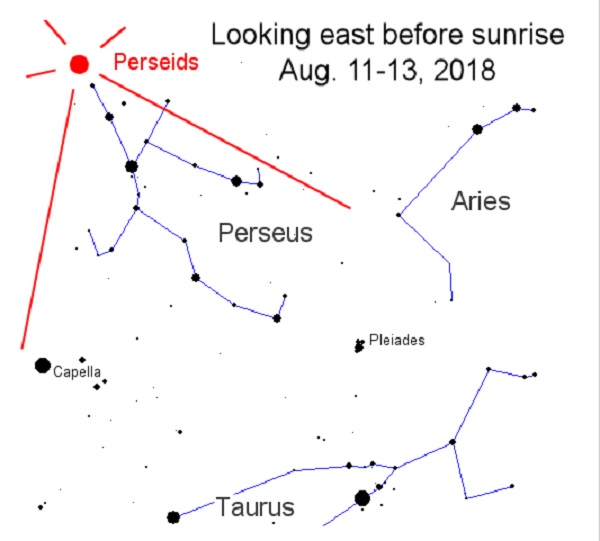

You know a meteor shower is going to be good when it produces dozens of fireballs a whole week before the shower peaks. Welcome to the Perseids. The best meteor shower of the year peaks Aug. 11th-13th when Earth passes through a stream of debris from giant comet 109P/Swift-Tuttle. NASA’s network of all-sky meteor cameras is already picking up strong activity over the USA, counting 66 Perseid fireballs during the three day period Aug. 4th-6th. The Perseid meteor shower is always good, but this year it is extra-good. The Moon will be New during the shower’s peak, providing a dark backdrop for as many as 100 meteors per hour.
The best time to look is during the dark hours before sunrise on Sunday, August 12th, and again on Monday, August 13th. At those times, the shower’s radiant will be high in the sky, spewing meteors in all directions: To see the greatest number of meteors, get away from city lights. Dress warmly, lie down on a blanket in a safe, dark place, and look up. Perseids can appear in any part of the sky, although all of their tails will point back toward the radiant in the constellation Perseus. Try looking for Perseids around 10 pm local time when the radiant is hugging the northern horizon. At that time, Perseids skim the top of the atmosphere, producing long colorful fireballs known as “Earthgrazers.” You won’t see many, but even one can make your day. Enjoy the show!




